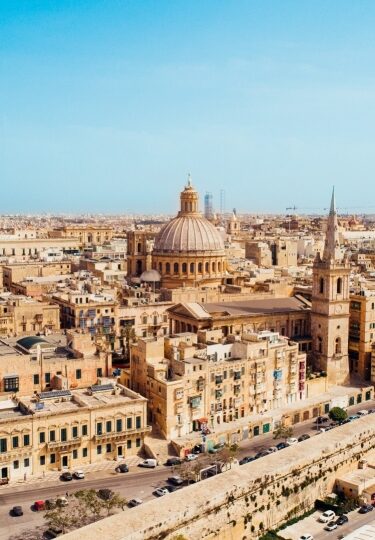From the capital, Valletta, to the countryside and coast, there are plenty of things to do in Malta for travelers in search of history, culture, archaeology, gastronomy, and blissful beach time.
The Maltese archipelago is made up of the main island, plus the smaller islands of Gozo and Comino. The islands are easy to get around, with a ferry service that operates to the smaller islands and water taxis darting around Valletta’s Grand Harbour.
From exploring the ancient Three Cities to swimming in clear turquoise waters, here are some of the best things to do in Malta.
Take the Ferry to Gozo
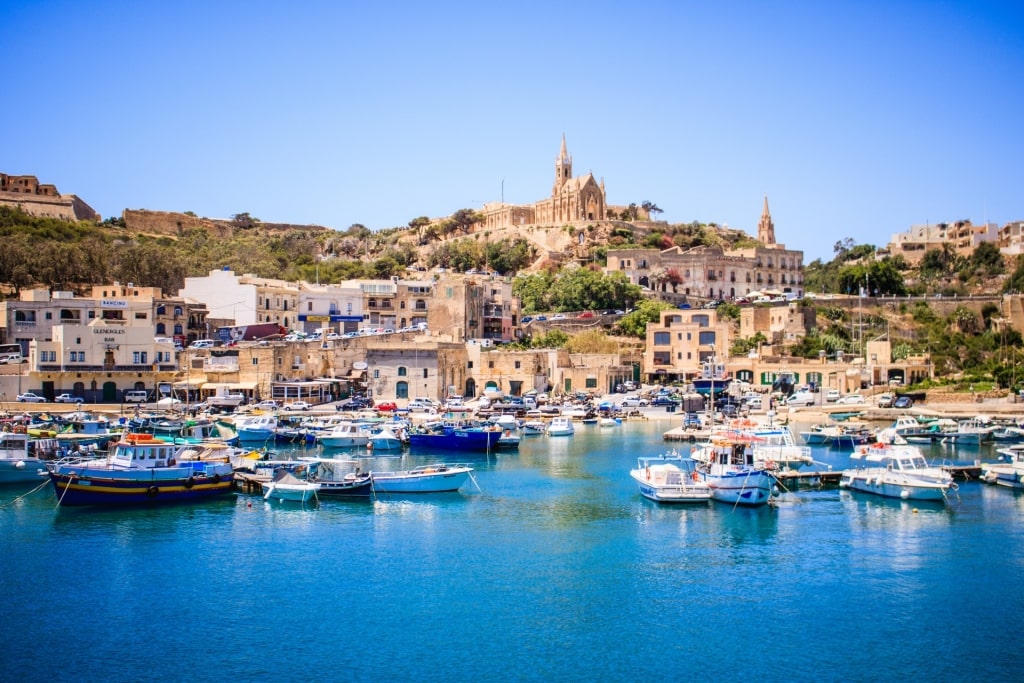
Gozo
Catching the ferry to tiny Gozo from the main island is one of the best things to do in Malta.
There are two routes to choose from, both ending in Mġarr in the south of Gozo. The quickest is the 25-minute route from Ċirkewwa on the northern tip of Malta, although if you’re visiting from Valletta, the 45-minute service from the Grand Harbour is more convenient.
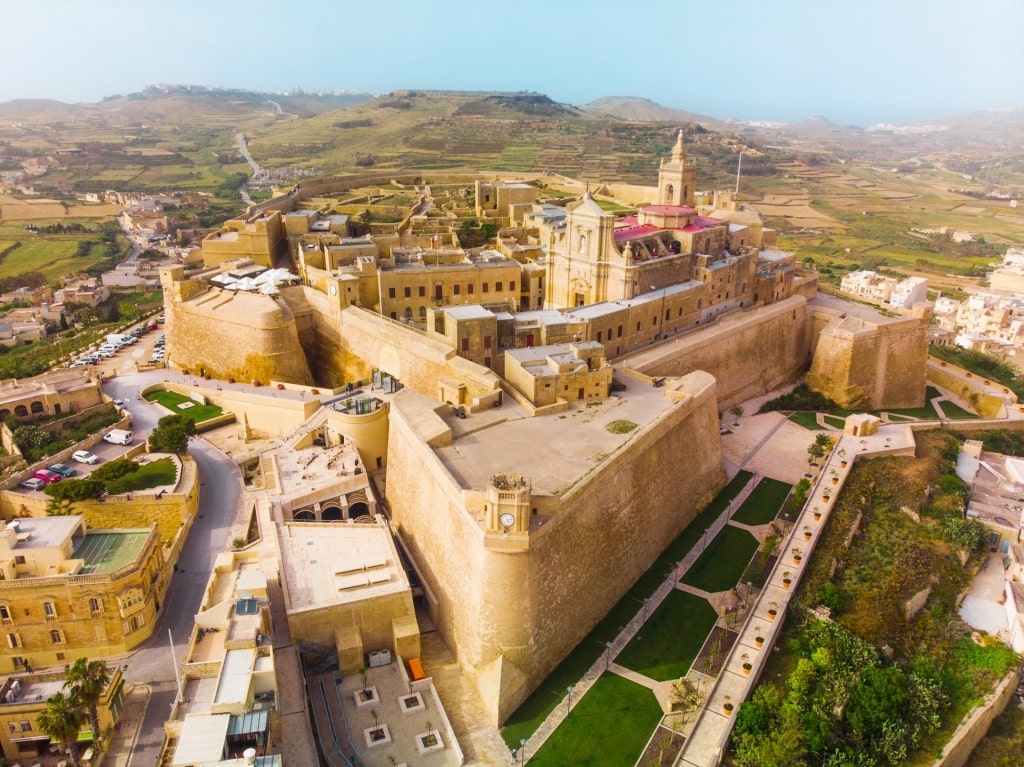
Gozo
In the center of Gozo, Victoria, also known as Rabat, is the island’s fortified capital. It’s easy to reach since all roads on Gozo lead here, with a taxi from Mġarr to Victoria taking 10 minutes.
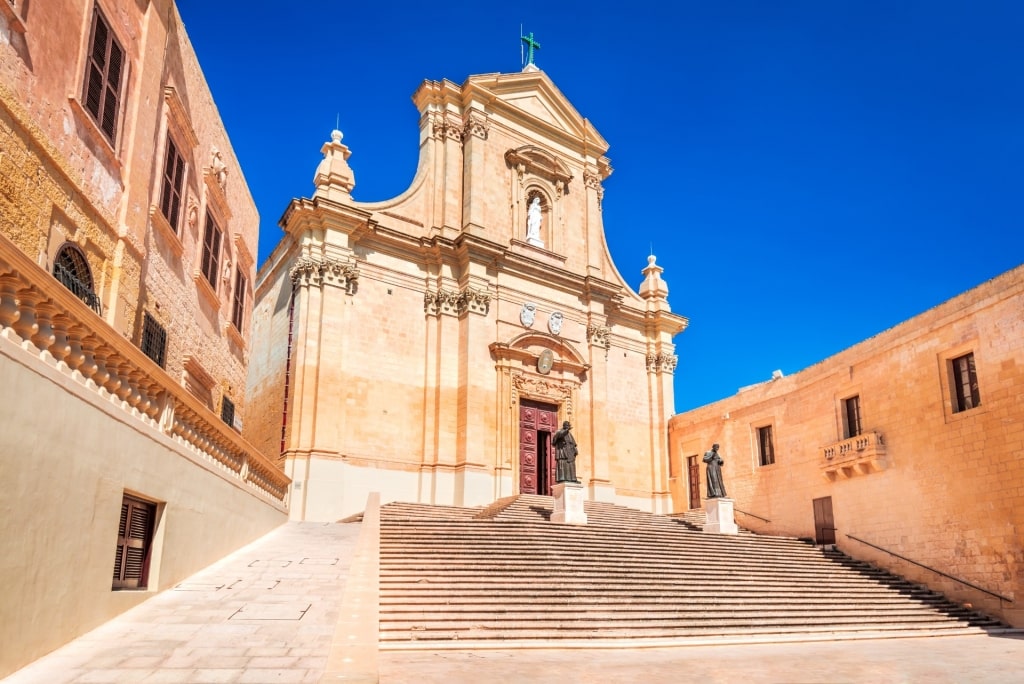
Gozo Cathedral
Wander through the beautiful old town streets of the ancient citadel that looms over Victoria from its lofty perch. Admire the 18th-century baroque Gozo Cathedral and delve into the island’s past at the Gran Castello Historic House. Equally fascinating is the Gozo Museum of Archaeology, with its display of prehistoric stone sculptures.
Outside the citadel, the tree-lined Independence Square is a delightful spot for relaxing and taking in Victoria’s café culture. Browse the market and take a shaded seat at one of the cafes or restaurants.
Laze on Idyllic Beaches
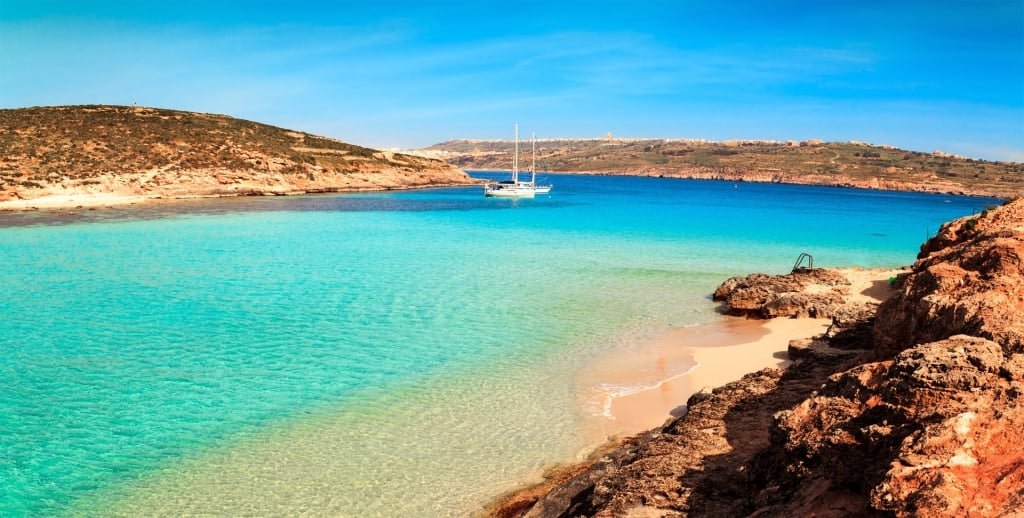
Blue Lagoon, Comino
As one of the best beach destinations in Europe, Malta has a beautifully diverse mix of shores to suit all types of beachgoers. Choose between soft, golden sand, rocky coves, and delicious lagoons with azure water. Thanks to Malta’s sunny Mediterranean climate, the beach-going season stretches from May through to October, too.
A visit to Comino’s Blue Lagoon is one of the best things to do in Malta. Though the Blue Lagoon is certainly no secret, it remains a top bathing and swimming spot for its small white sandy beach framed by rocks fragrant with Mediterranean thyme, Mediterranean buckthorn, and Maltese sea lavender.
The aquamarine water is the biggest lure, though, with skipjack, tuna, sea bream, and parrotfish among the sea life around the lagoon.
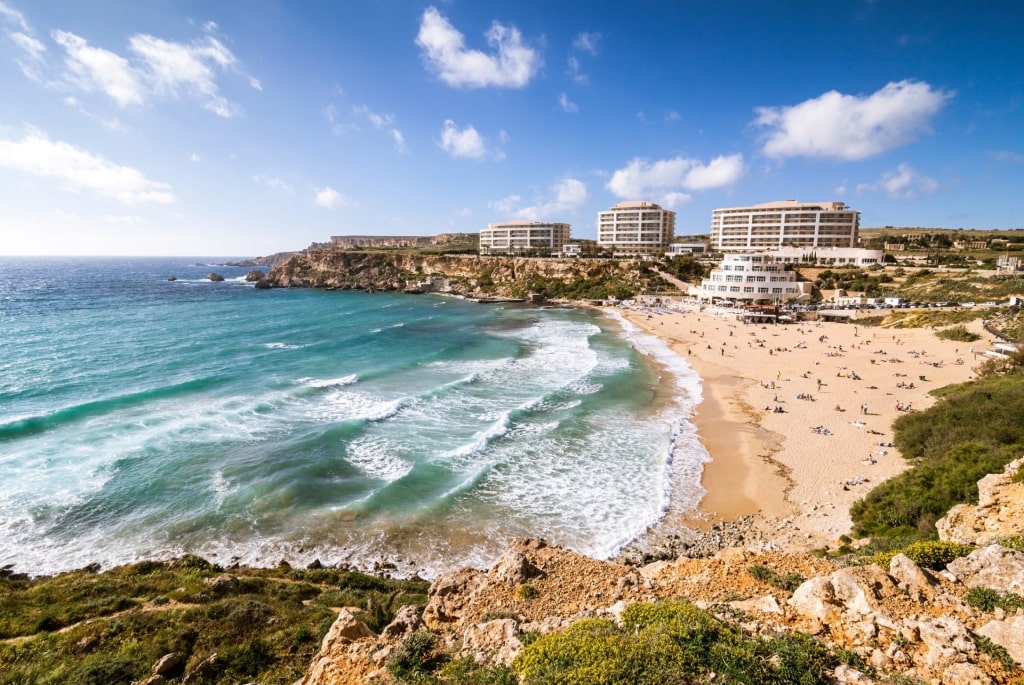
Golden Bay
If you prefer a larger beach in Malta, Gnejna, Għadira Bay, Għajn Tuffieħa, and Golden Bay are failsafe options for swathes of soft sand, crystalline water, and amenities including watersports and restaurants on the main island.
On Gozo, Mġarr ix-Xini is a narrow inlet with a shallow shore that’s perfect for snorkeling, while Hondoq ir-Rummien is a lovely spot for watersports and boat tours.
Take a Boat Tour of the Grand Harbour
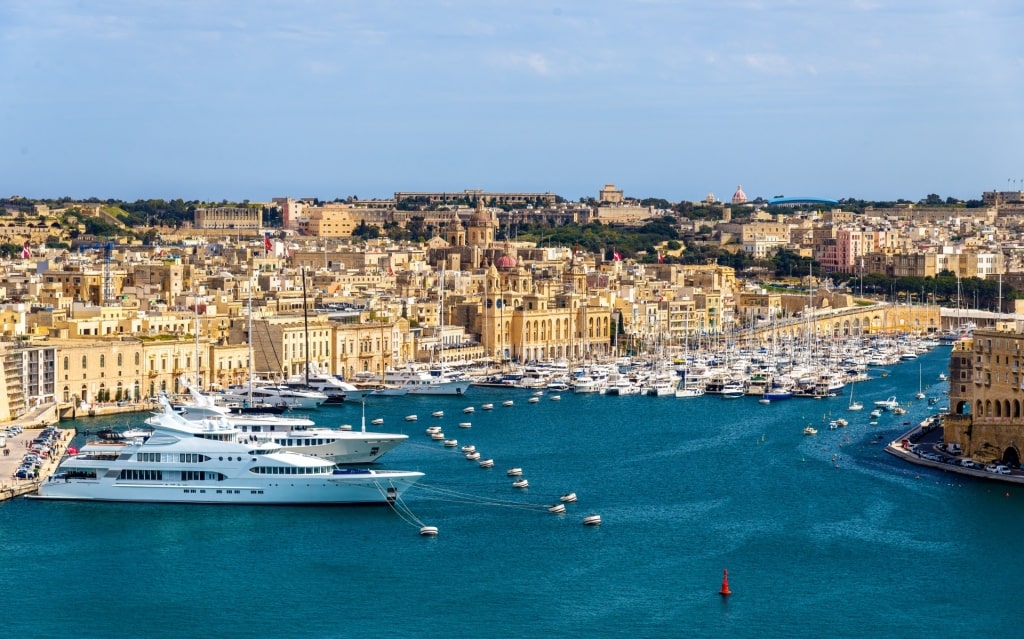
Grand Harbour
Malta is known for its Grand Harbour, an extraordinary, 2,000-year-old body of water separating Valletta on the north from The Three Cities—Vittoriosa, Senglea, and Cospicua—to the south.
Hail a traditional dghajsa taxi boat that resembles Venice’s gondolas to cross the Grand Harbour. Few of these elegant timber row boats remain in use today, as they’ve mostly been replaced by the quicker yellow water taxis.
Either way, a boat ride on the historic Grand Harbour gives travelers the perfect opportunity to gaze at spectacular views of Valletta and The Three Cities’ butterscotch-colored buildings from the water.
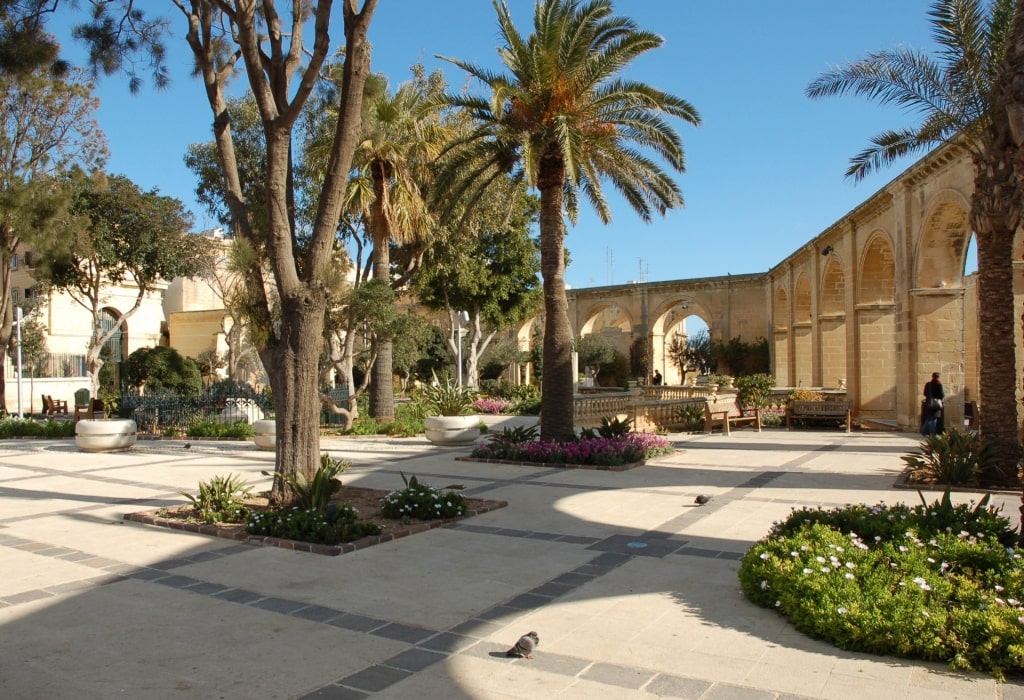
Upper Barrakka Gardens
For wide-screen views of the Grand Harbour and The Three Cities, head to Upper Barrakka Gardens, 164 feet above the sea in Valletta. There’s a nifty elevator affixed to the city wall that leads up to Upper Barrakka Gardens from the ferry drop-off point.
Stroll Around the Old Capital of Malta
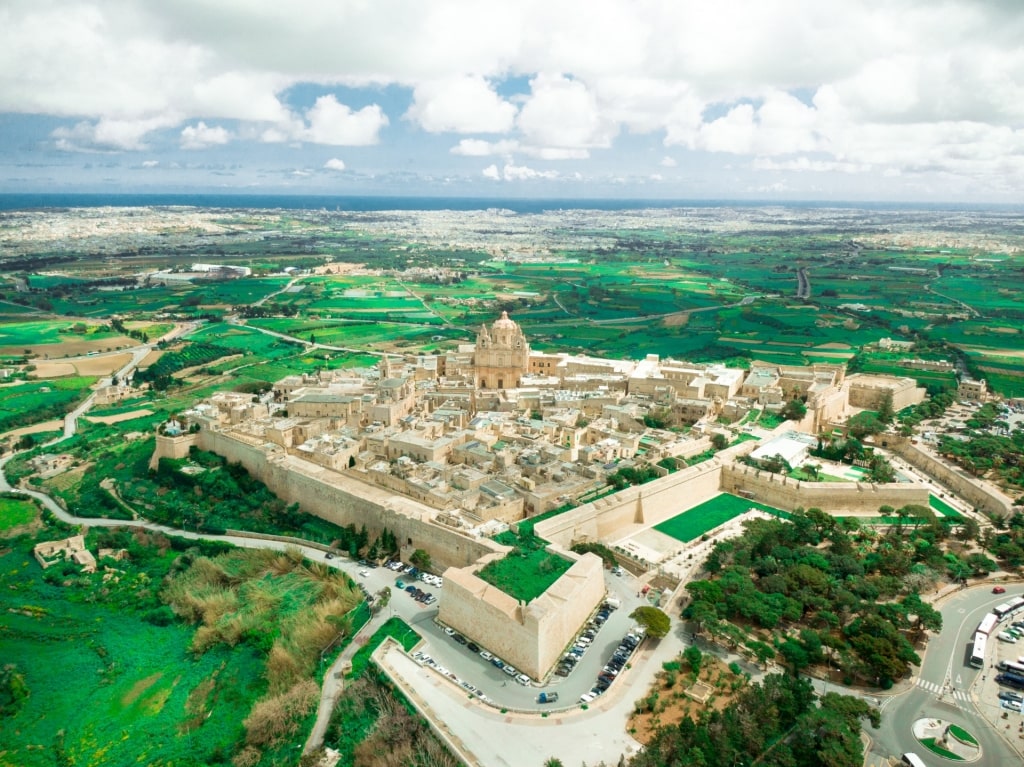
Mdina
Mdina is the fortified, UNESCO-listed former capital of Malta. This well-preserved hilltop city traces its roots back thousands of years.
To explore the medieval city, follow the stone bridge through Mdina Gate. Wander the sublime limestone alleyways, lined with medieval and baroque buildings.
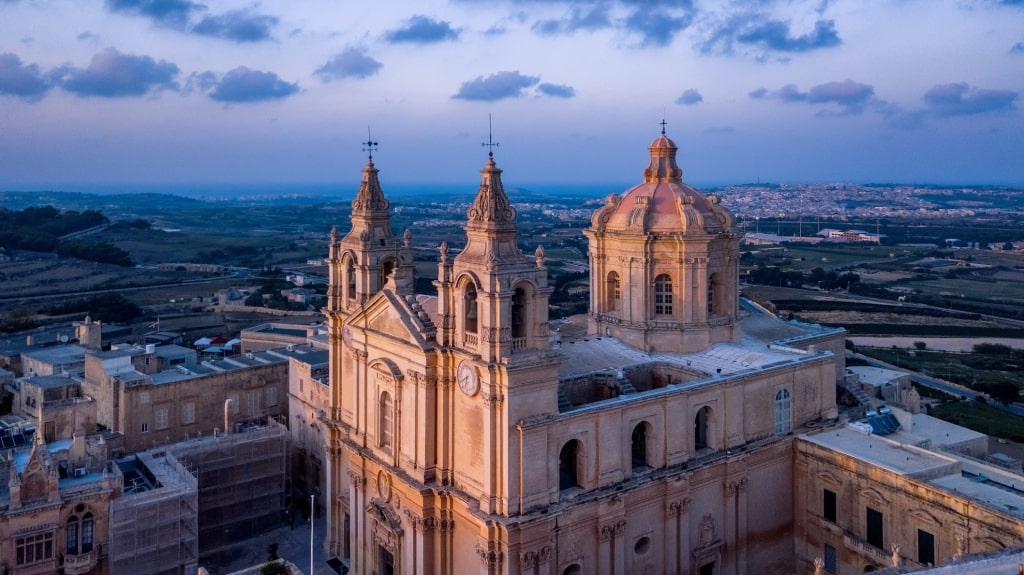
St. Paul’s Cathedral, Mdina
Squares, chapels, and museums fill this compact city, including Malta’s oldest church, St. Paul’s Cathedral, built between 1696 and 1705.
Dedicated to the apostle St. Paul, who was said to have lived on the island after being shipwrecked in Malta in 60 A.D., the cathedral is filled with beautiful frescoes painted onto the vaulted ceilings.
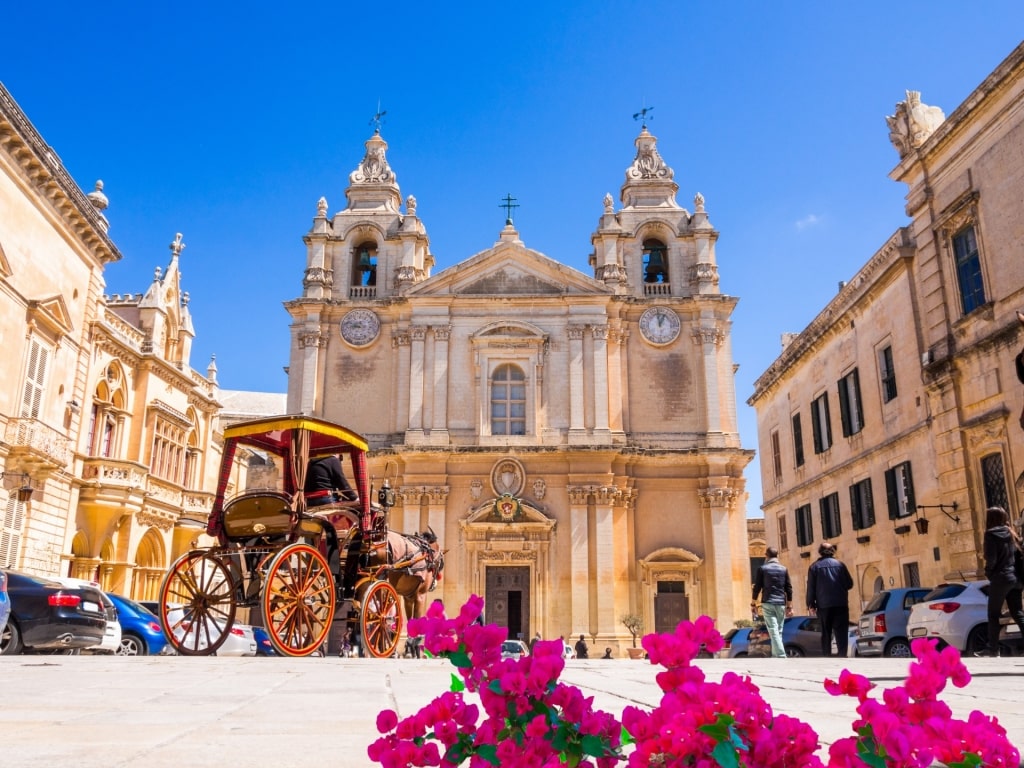
Mdina
Like many old towns, Mdina is also crammed with gift stores, galleries, and independent shops that make for a wonderful shopping experience.
Once you’ve wandered around the pretty streets, stop by Fontanella Tea Garden for a traditional lunch of ftira, a Maltese bread stuffed with fillings such as sausage and sun-dried tomatoes or tuna and capers.
Save room for Fontanella’s delicious homemade lemon, cherry and almond, or date and walnut cakes.
Admire Ħaġar Qim & Mnajdra Archaeological Park
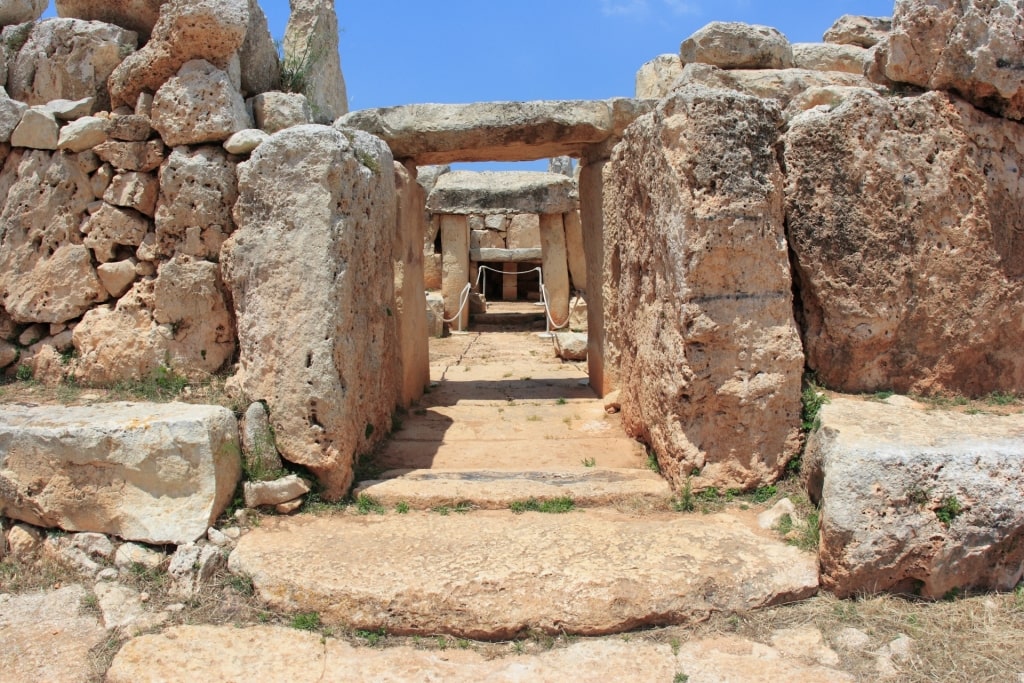
Ħaġar Qim
The 5,000-year-old Ħaġar Qim temple in the south of Malta is a late-Neolithic archaeological site that lies between pastoral plains and the open sea. The well-preserved Ħaġar Qim was discovered by archaeologists in 1839, shortly followed by the nearby site of Mnajdra in 1840.
Wander the temples and relics of Ħaġar Qim and its megalithic buildings. Doorways inside the main building are constructed in the trilithon style (the most famous example of this is England’s Stonehenge), or as porthole-style passageways.
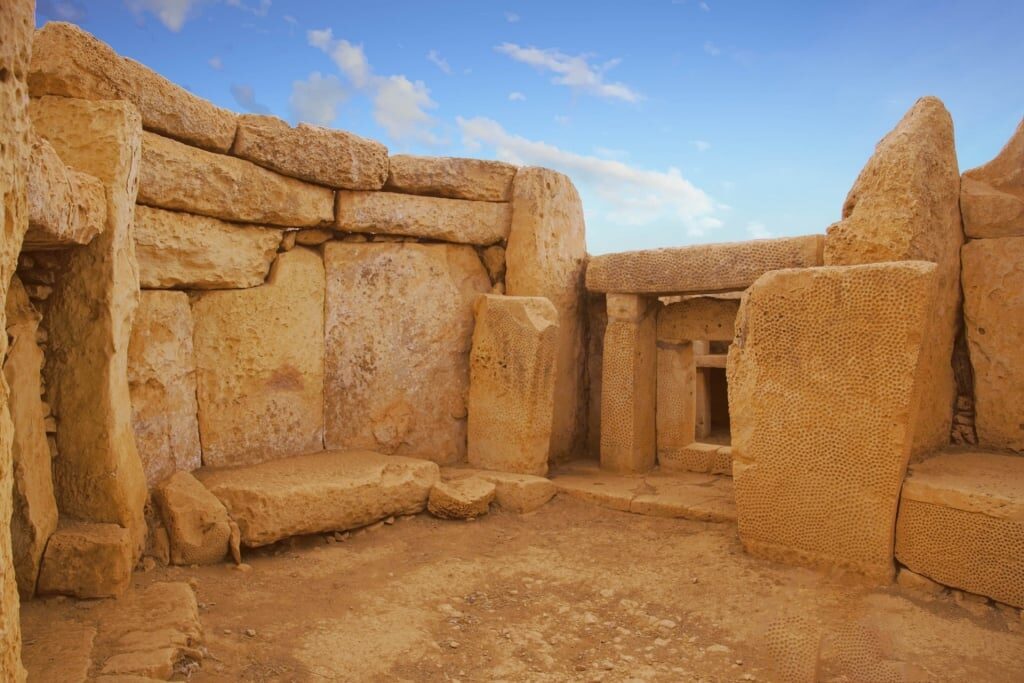
Mnajdra
Close by, the site of Mnajdra consists of the remains of three limestone buildings. Interestingly, the south building’s doorway is aligned with sunrise during spring and fall equinoxes, while the sun brightens two adorned slabs inside the first chamber during winter and summer solstices.
Stop by the small visitor center, featuring an exhibition on Ħaġar Qim and Mnajdra and their relationship with astronomy, their conservation, as well as models and artifacts from the sites.
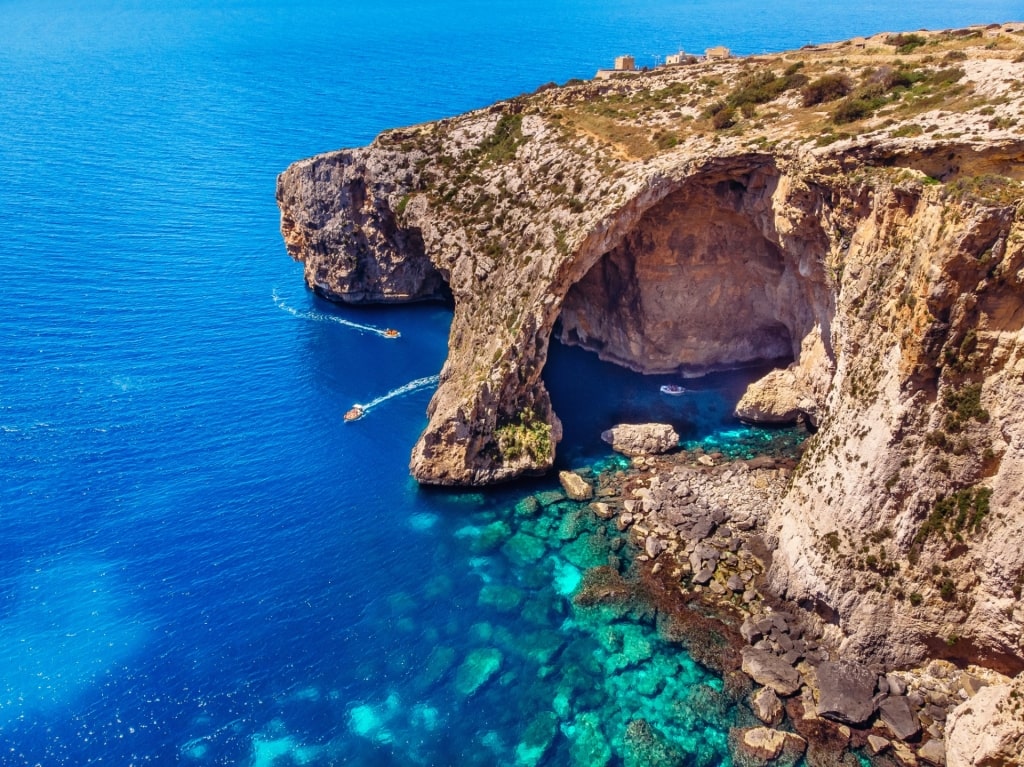
Blue Grotto
After, enjoy a scenic drive south on the cactus-lined Triq il-Wied highway. There’s a lookout point for breathtaking views of the coastline, including the Blue Grotto and Blue Wall.
Visit the Fishing Village of Marsaxlokk
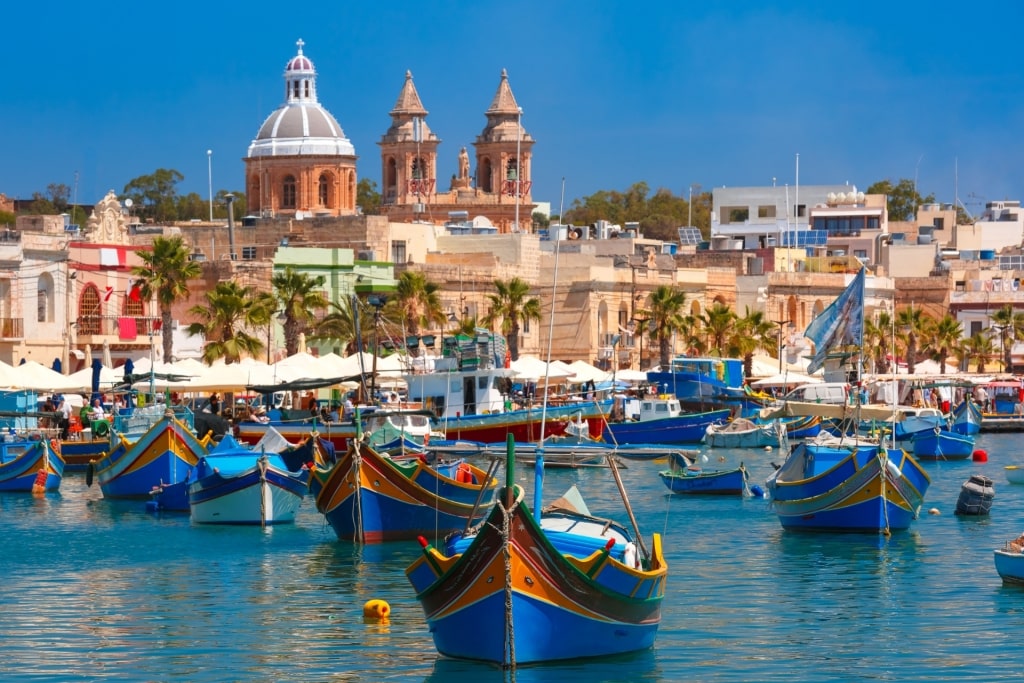
Marsaxlokk
Marsaxlokk is a quaint fishing village in the southeast of Malta set around a pretty U-shaped harbor.
Every turn in Marsaxlokk is postcard-worthy. The harbor is filled with small blue, yellow, and green traditional fishing boats that gently bob on the aquamarine water, while the promenade is lined with palms and traditional two-story houses adorned with colorful shutters and balconies.
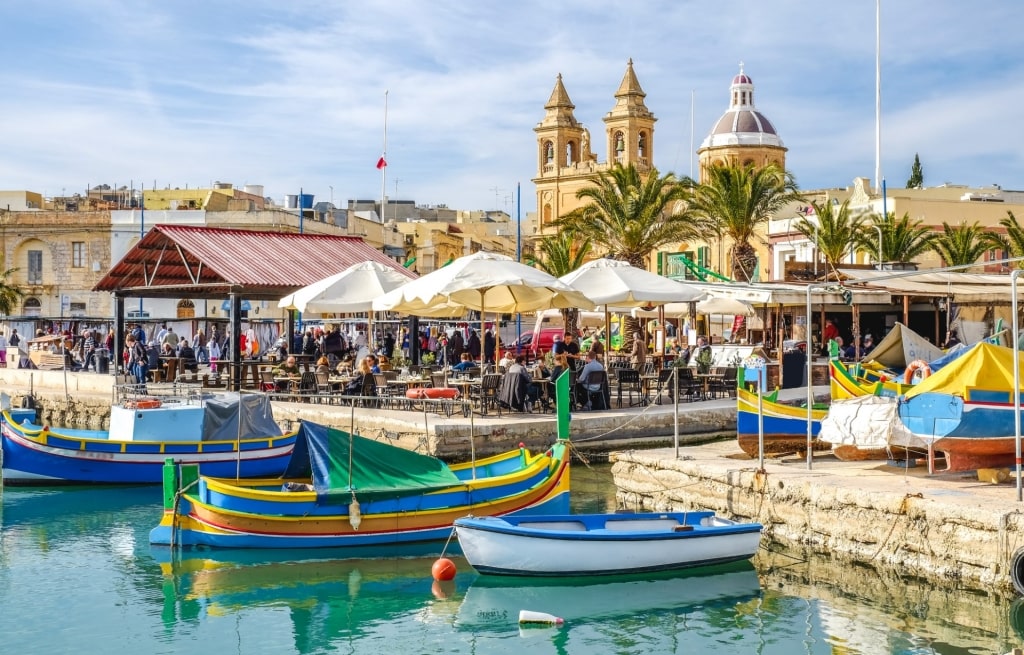
Marsaxlokk
Enjoy a leisurely stroll along the waterfront, which is also dotted with cafés and restaurants, such as La Nostra Padrona for fresh seafood and Ir-Rizzu for traditional Maltese cuisine.
Stop by the local open-air market to pick up a selection of souvenirs, including crafts, home-baked goods, and other local produce.
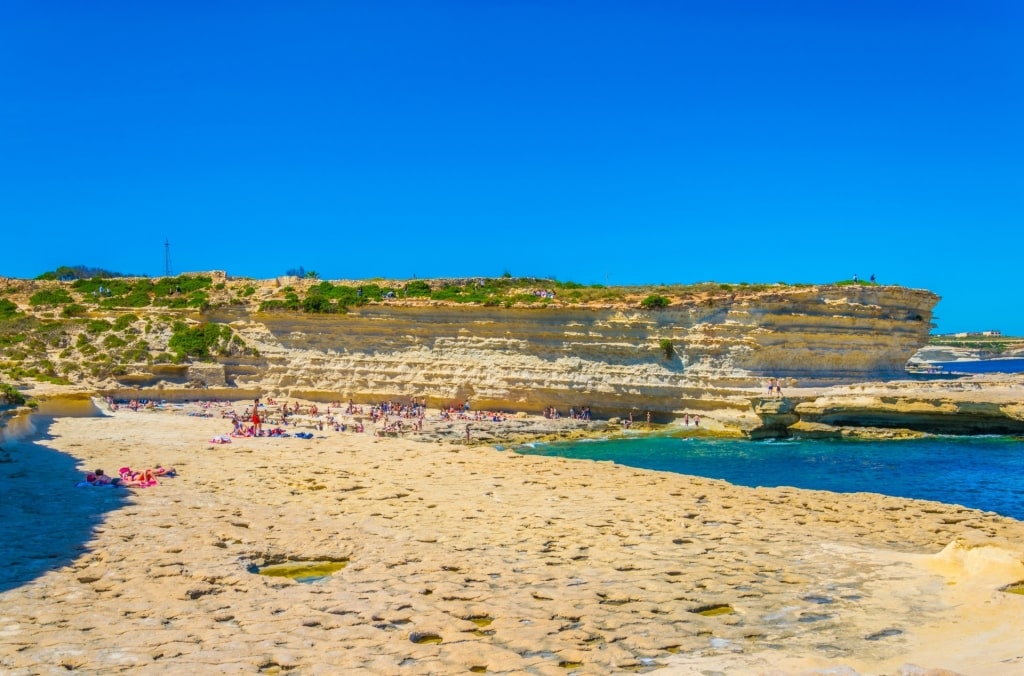
St. Peter’s Pool
The seaside village is just a short drive or 30-minute walk to St. Peter’s Pool, a dazzling rock formation that forms a horseshoe-shaped natural swimming pool.
Here, visitors leap the short distance from the weathered coast into the water. Pack a towel and swimsuit and cool off with a dip in the sea.
Discover Valletta’s Historic Landmarks
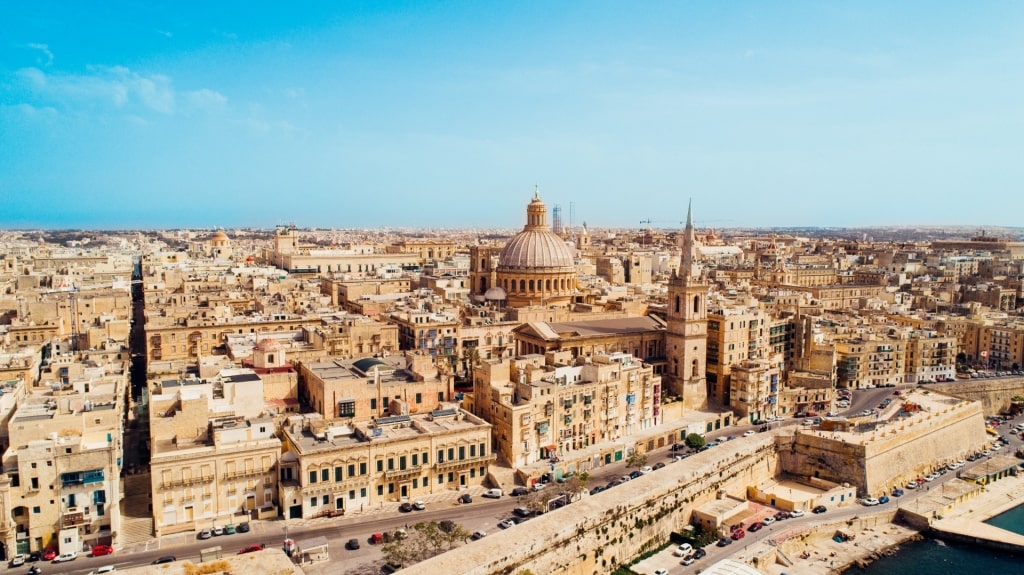
Valletta
Founded in 1566, Valletta is a small but mighty city steeped in history. Valletta’s grid layout, contained within a series of imposing walls and bastions, devised by the Knights of St. John, makes it easy for visitors to navigate.
Indeed, one of the best things to do in Malta is to wander Valletta’s charismatic hilly streets, taking in the glorious limestone houses with their colorful wooden balconies.
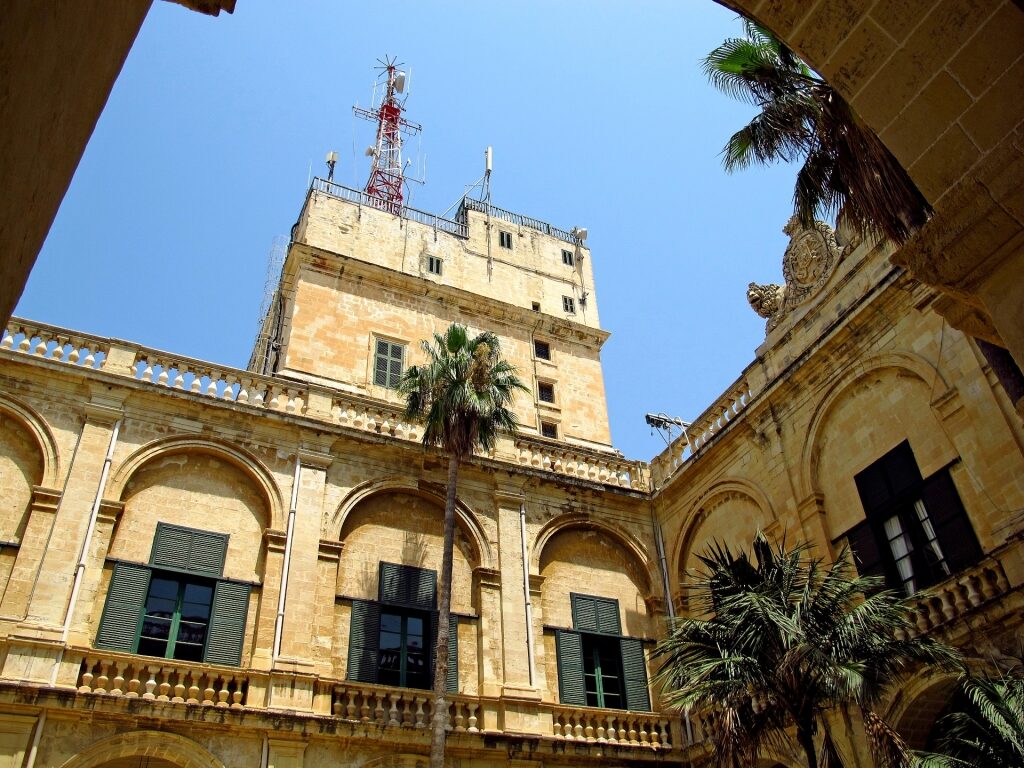
Grand Master’s Palace, Valletta
Central to Valetta is the storied Grand Master’s Palace or, simply, The Palace, in St. George’s Square. Built in the 16th century for the Grand Master of the Order of St. John, The Palace was the first building to be constructed in Malta’s new capital.
The building has also served as the Governor’s Palace during the British period and the official seat of Malta’s first constitutional parliament. It’s now the Office of the President of Malta.
Visitors can view exquisite state room collections, including works by Italian painter Matteo Perez d’Aleccio depicting the Great Siege of Malta in 1565, and rare, 18th-century French tapestries by Paris-based Gobelins Manufactory. Wander the portrait gallery to view the paintings of Maltese rulers, from the Knights of St. John to the present day.
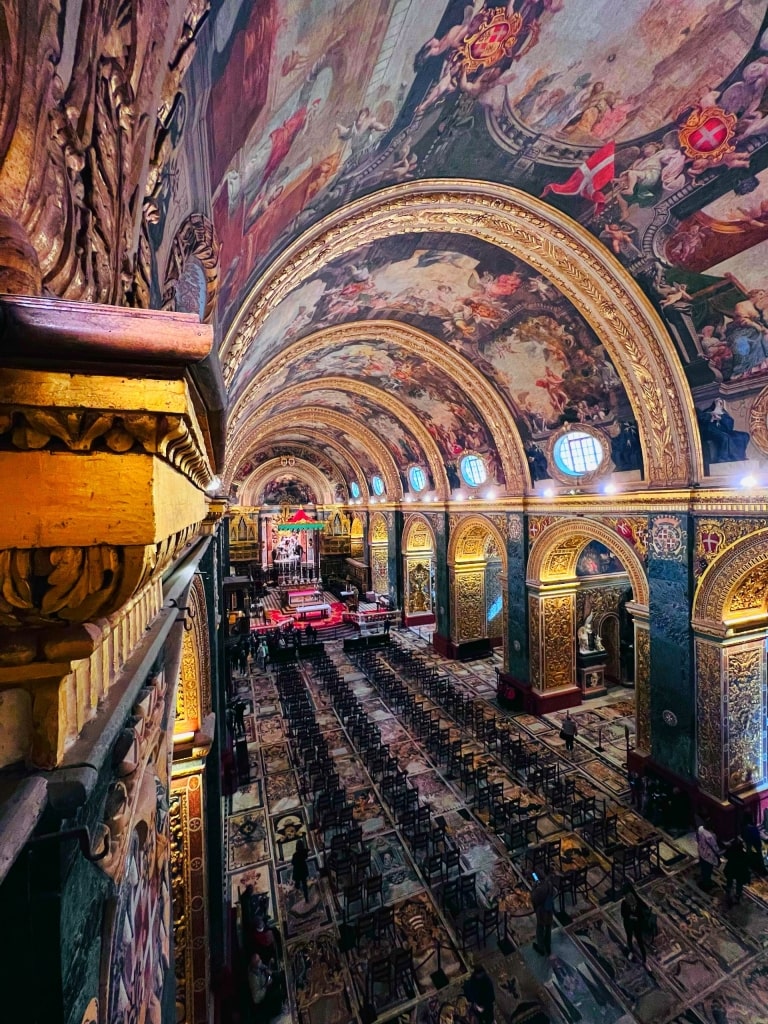
St. John’s Co-Cathedral, Valletta
Equally impressive is the 16th century St. John’s Co-Cathedral, one of the most beautiful churches in the world, featuring head-tilting frescoed ceilings.
Dominating Valletta’s skyline is the magnificent Basilica of Our Lady of Mount Carmel, with its domed roof rising above the city. The basilica was rebuilt in the 20th century following damage sustained during World War II to the original 400-year-old church.
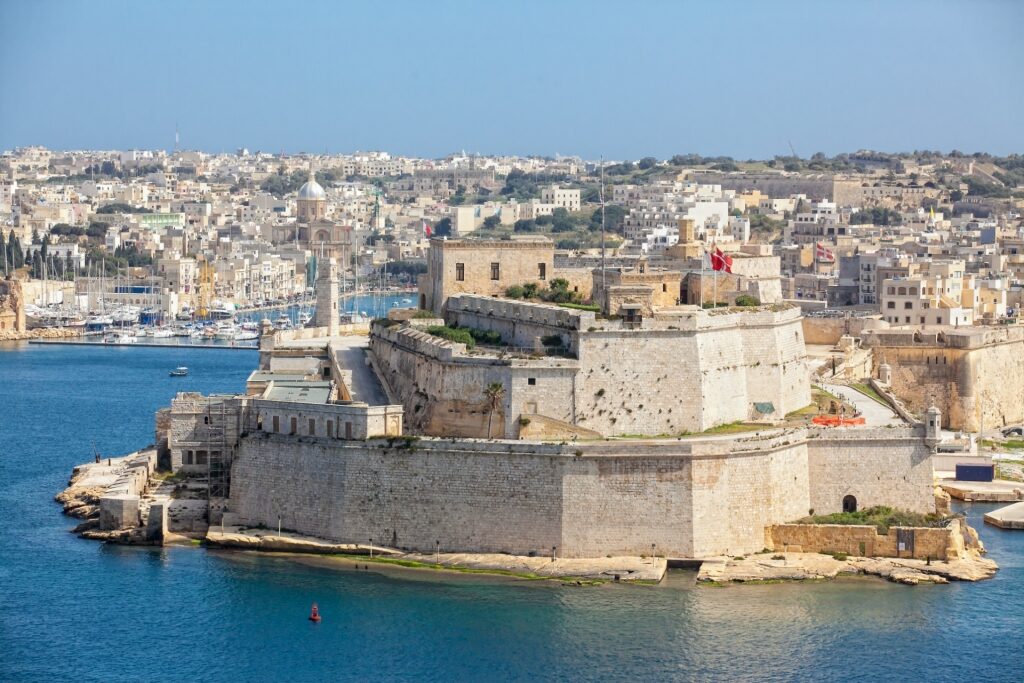
Fort St. Elmo, Valletta
There’s plenty more, including Malta’s well-equipped National War Museum on the tip of Valletta at Fort St. Elmo.
This star-shaped stronghold was built in 1552 to push back an impending Ottoman siege. In the centuries since, the fort has been extensively added to with a lighthouse, chapels, and barracks.
The National War Museum reveals St. Elmo’s role in World War II and displays significant artifacts such as military armor of the Order of St. John and the Ottoman Turks, and a Jeep driven by Roosevelt in Malta during World War II.
Wander the Serene San Anton Gardens
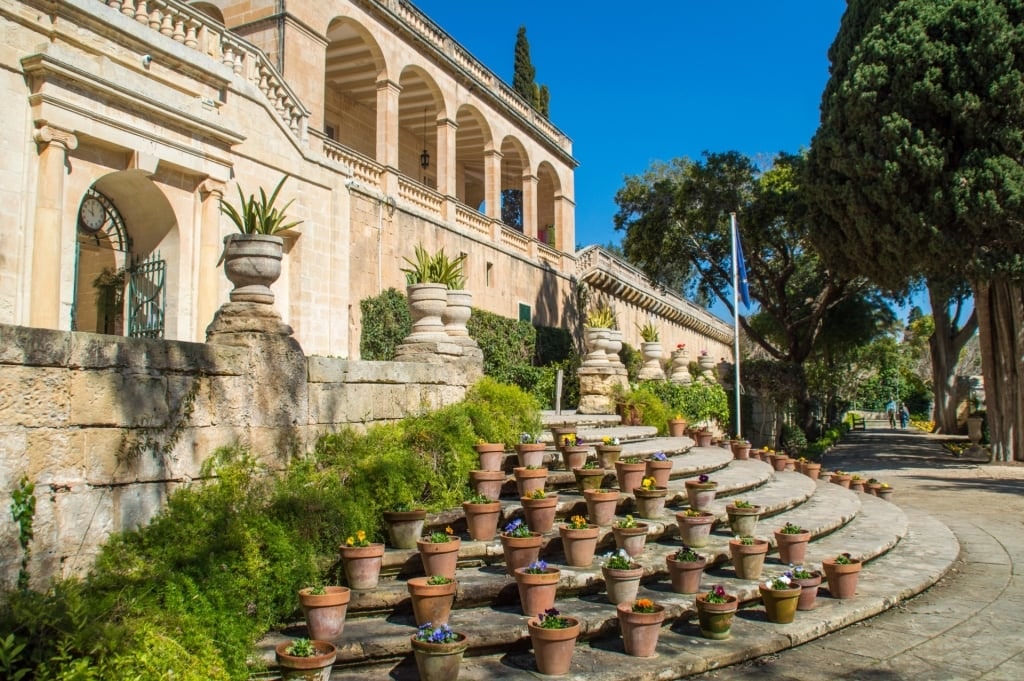
San Anton Palace
The splendid San Anton Gardens in Balzan were established between 1623 and 1636 by Grand Master Antoine de Paule to complement his summer residence, San Anton Palace. Today, the elegant San Anton Palace is the residence of the Maltese President, where state visits are often hosted.
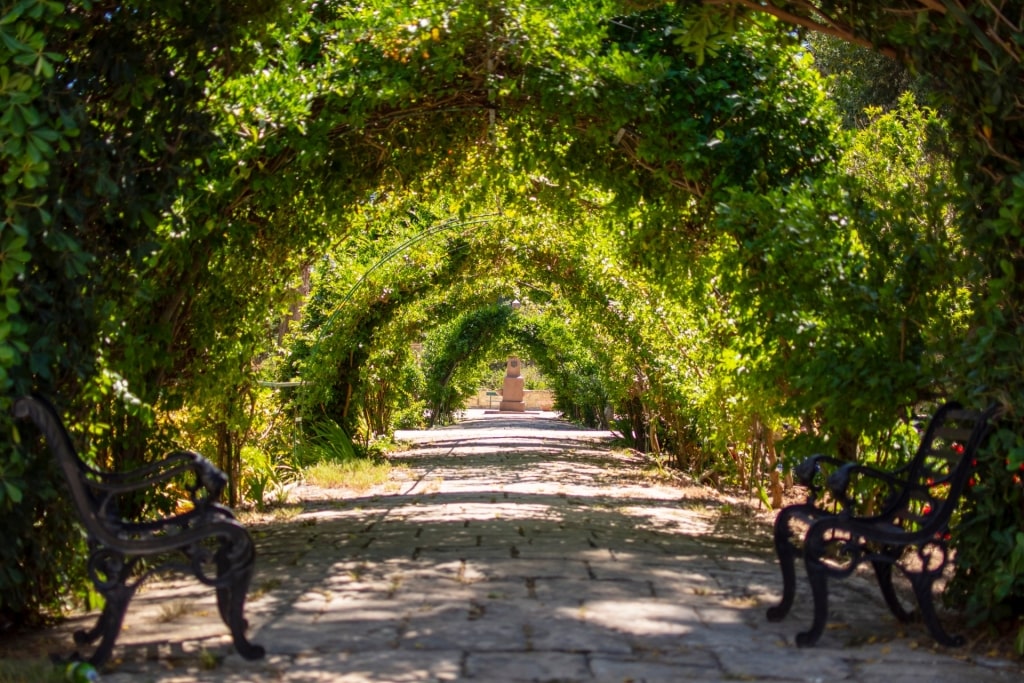
San Anton Gardens
The gardens are the true delight. Towering palms and mature trees line paths that lead to ponds, fountains and flower beds.
Marvel at the gorgeous displays of blooming bougainvillea, sweet-scented roses, and fragrant Norfolk pines. There are leafy, sun-dappled spots to enjoy coffee or soda from the café.
Check San Anton Gardens’ summer program, too, for open-air theater and musical performances.
Marvel at the Mosta Dome
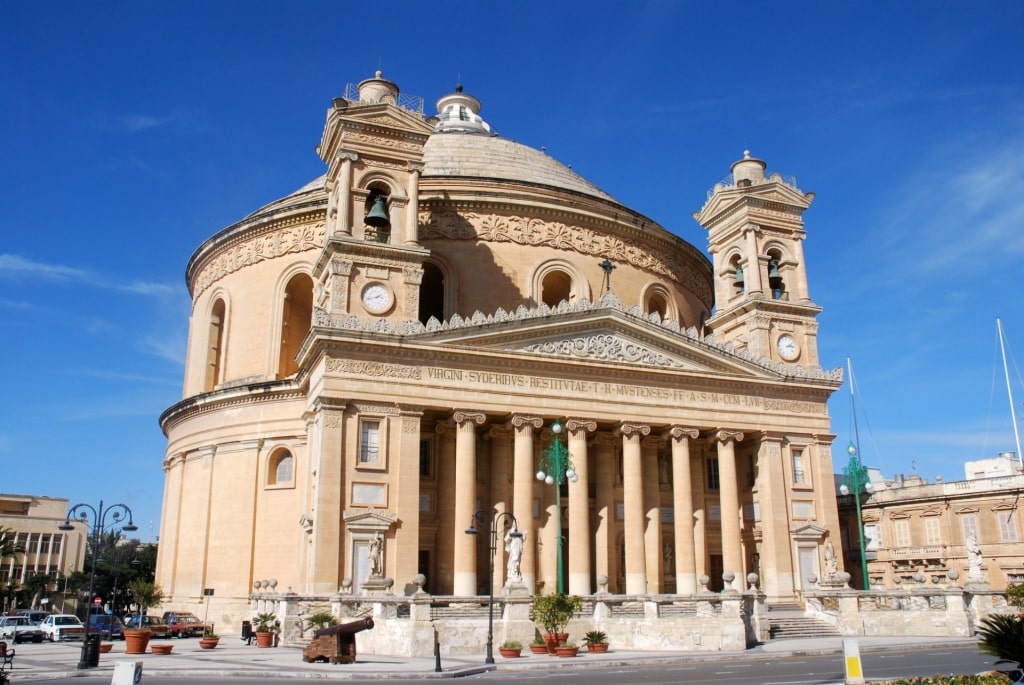
Mosta Dome
The gargantuan Rotunda of Mosta, officially the Sanctuary Basilica of the Assumption of Our Lady, features one of the largest unsupported domes in the world.
Built in the mid 1800s around an existing church that was deemed too small for the growing parish, the Rotunda of Mosta’s design is based on Rome’s Pantheon.
Before viewing the jaw-dropping dome from inside, gaze at the Rotunda of Mosta’s external elevation. The Latin-inscribed front facade features twin bell towers and two rows of soaring columns that visitors pass through to enter the church.
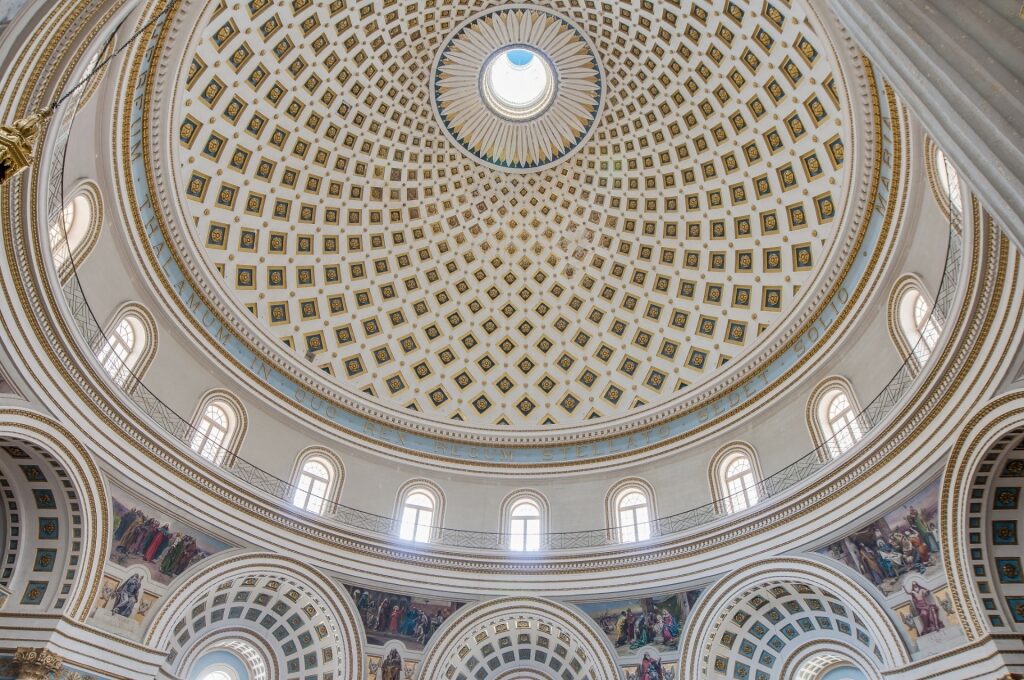
Mosta Dome
Inside, the dome’s diameter measures 121 feet, with a height of 179 feet. If you can tear your eyes away from the ceiling, admire the brilliant works by Maltese painter Giuseppe Calì that adorn the church.
In 1942, in the midst of World War II, a bomb penetrated the dome and landed on the church’s floor during mass. Thankfully, the bomb failed to explode and the damage was minimal.
Imbibe at a Maltese Winery
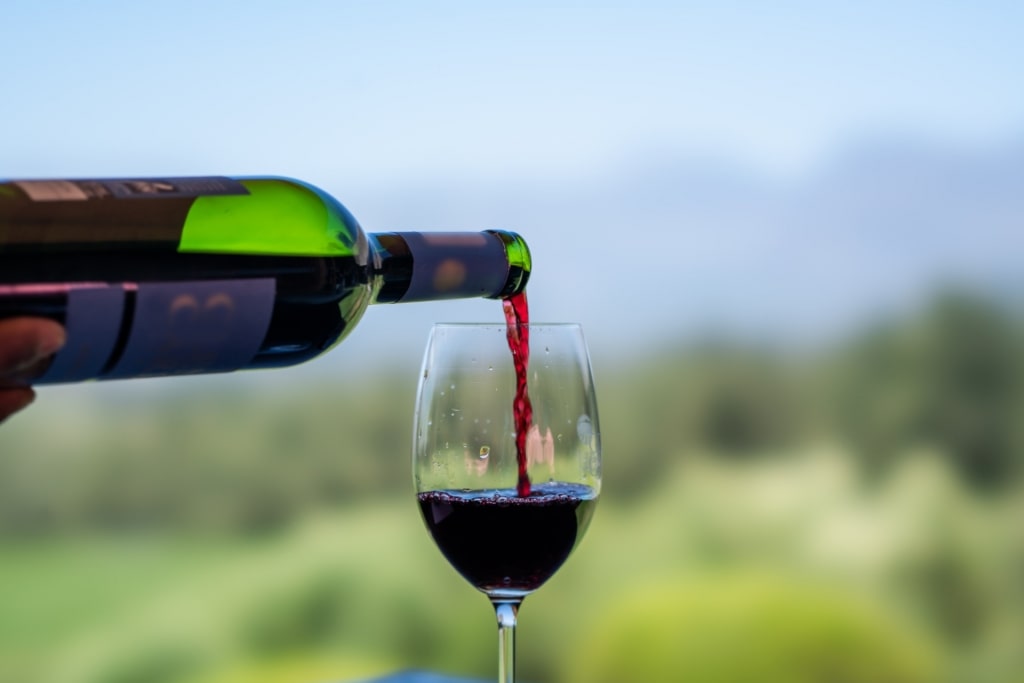
Wine
If you’re keen to taste local wines on vacation in Malta, a visit to Meridiana Winery in the center of this European island is a must do. Located on a former airstrip in Ta’ Qali, Meridiana is set around an attractive limestone farmhouse where the estate’s wines are produced.
Between 1994 and 1995, 91,000 vines were planted on the sprawling Meridiana estate. You can wander among the verdant vines, rich with flavorful chardonnay, cabernet sauvignon, merlot, syrah, and muscat grapes.
The estate produces 10 different wines, including red, white, and rosé. Sip on the floral Fenici white or the punchy, deep-red Celsius, with its chocolate-blackcurrant flavors. Tours and tastings take place daily.
Head to The Three Cities
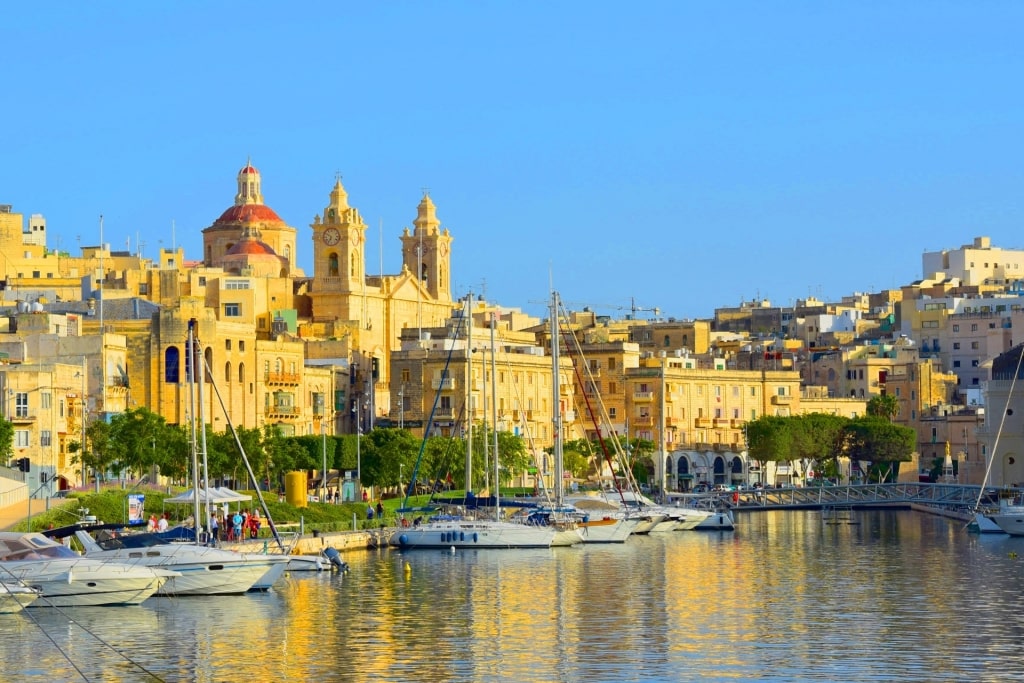
Cospicua
Bewitching Cospicua, Vittoriosa, and Senglea jut out into the Grand Harbour across from Valletta. Cospicua is the largest and Senglea the smallest of The Three Cities, while Vittoriosa is the area first settled in by the Knights of St. John when they arrived in Malta in 1530.
There are many churches, palaces, and forts to explore, including Cospicua’s Collegiate Church of the Immaculate Conception and Vittoriosa’s Inquisitor’s Palace and Fort St. Angelo.
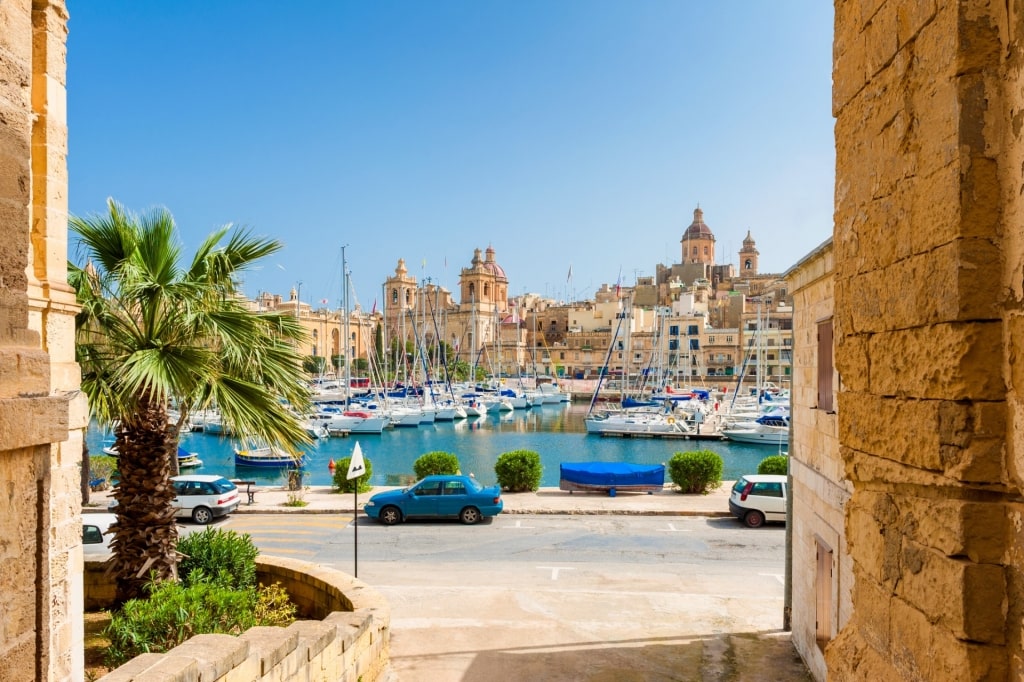
Senglea
Stroll within fortified Senglea to admire the pretty streetscapes, including Triq Il – Vitorja (Victory Street) and Triq Iz – Zewg Mini (Two Mines Street). The three- and four-story buildings feature a dazzling limestone uniform with Malta’s signature colorful window boxes and balconies lining these photogenic strips.
On the tip of Senglea is the peaceful Gardjola Gardens where you could wander among the weather-worn Mediterranean trees for spectacular views of Valletta.
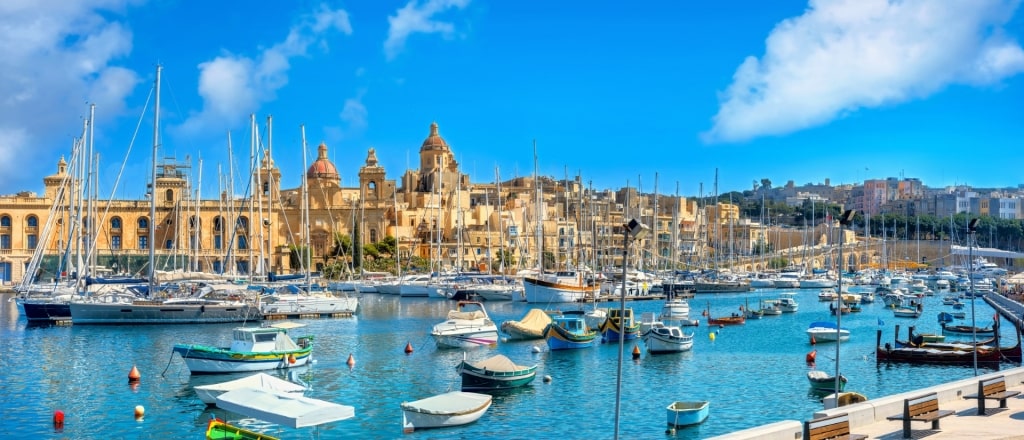
Vittoriosa
Pack in the Malta Maritime Museum, St. Lawrence’s Catholic Church, and Victory Square in buzzy Vittoriosa. You might spot aging traditional red telephone boxes—a throwback to the British period of rule.
There are some wonderful waterfront restaurants in The Three Cities to sample. For an indulgent Mediterranean feast, make a reservation at Terrone in Vittoriosa. Dishes are sublime, including the summer fish stew, featuring monkfish, red mullet, shrimp and mussels, served alongside views of the sparkling Mediterranean Sea.
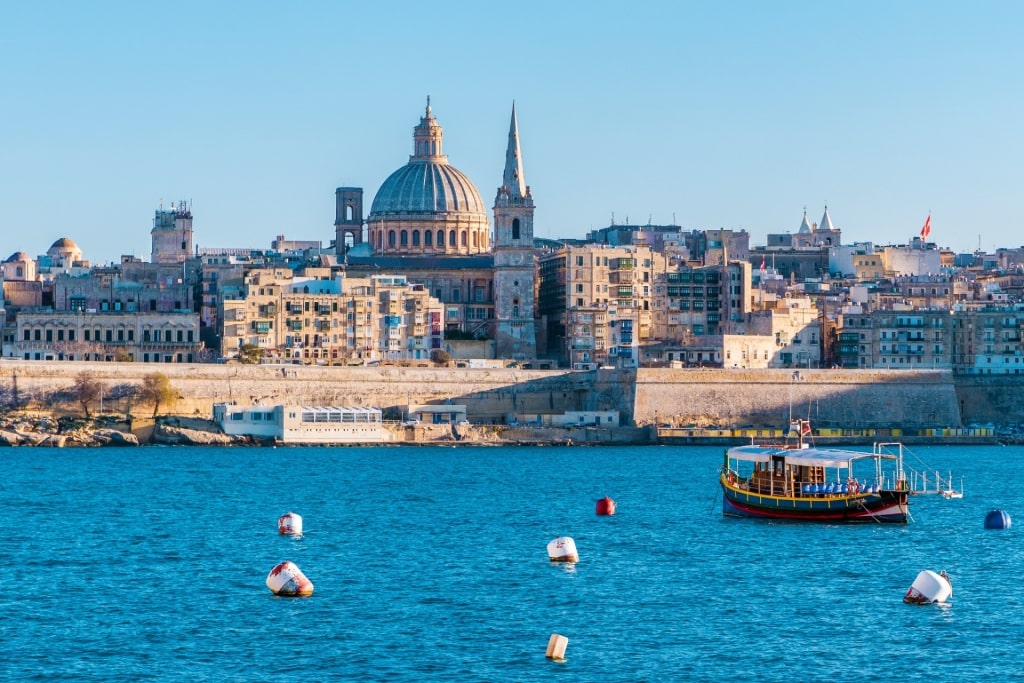
Valletta
Malta is a wonderful destination to explore on vacation. Discover Celebrity Cruises’ cruises to Valletta to book your next Mediterranean getaway.
